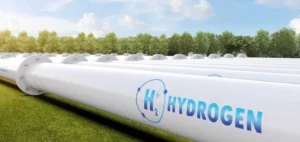The Symbio joint venture between Michelin, Forvia and Stellantis has reached an important milestone with the inauguration of their fuel cell gigafactory at Saint-Fons, near Lyon. The plant, named “SymphonHy”, is not only the largest of its kind in Europe, but also represents a crucial milestone in the industrialization of hydrogen technology.
The Ambition to Massify Hydrogen Production
With an initial production target of 15,000 hydrogen systems by 2024, the plant plans to increase its capacity to 50,000 units annually by 2026. This ramp-up is in response to growing demand for hydrogen-powered vehicles, despite the fact that the market is still in its infancy. The Saint-Fons plant, which employs 700 people, is part of a wider initiative by the French government and the European Union to promote hydrogen as a viable energy alternative.
Stellantis and the Hydrogen Revolution
Stellantis, already recognized as a leader in Europe’s commercial vehicle sector, has made its mark on the sector by delivering its first hydrogen-equipped vehicles, assembled in Germany, at the end of 2021. The company aims to reduce the costs of this technology, with the hope of making hydrogen systems more affordable than electric batteries by 2030.
Challenges to meet
Hydrogen production from carbon-free sources remains a major challenge. The French government is committed to investing heavily in this sector, aiming for production of 600 kilotonnes per year by 2030. The Saint-Fons plant will play a key role in this ecosystem, being supplied with hydrogen produced by the electrolyser on the Pierre-Bénite dam, with a connection scheduled for 2025.
A Hydrogen Future for Heavy Vehicles
In addition to its impact in Europe, Symbio also plans to expand its footprint in North America with a gigafactory in California. This expansion is aimed at supplying hydrogen systems for the US LCV and truck market, with brands such as Ram from Stellantis planning to switch to hydrogen by 2026-2027.
The inauguration of the SymphonHy plant in Saint-Fons is more than just an industrial event; it represents a decisive turning point in the energy transition to a cleaner future. With this breakthrough, Michelin, Forvia and Stellantis are not only demonstrating their technological leadership, but are also firmly committed to sustainable, environmentally-friendly mobility.






















